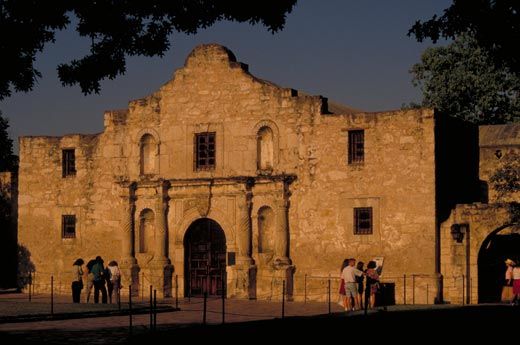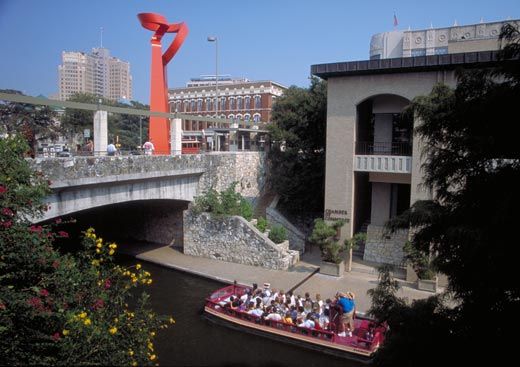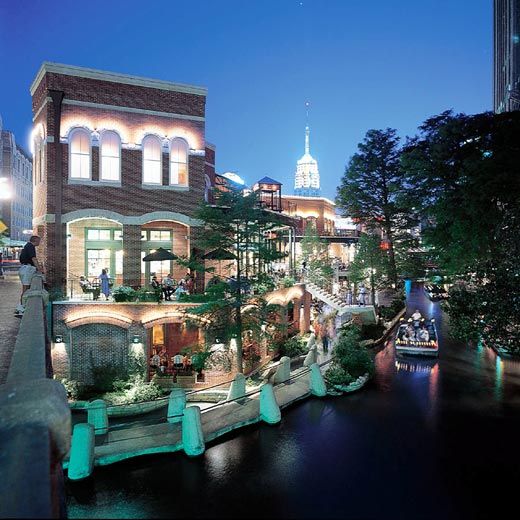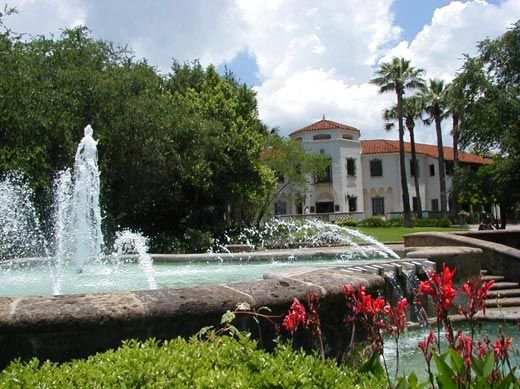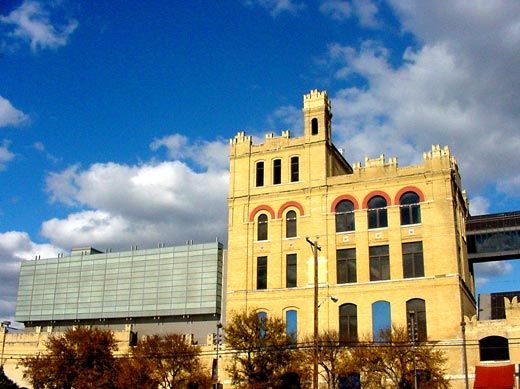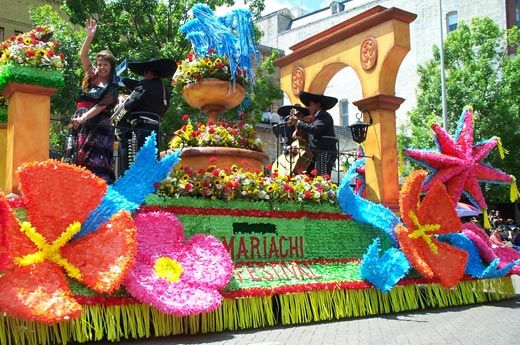San Antonio, Texas
Population: 1,296,682 (2006 estimate)
Percentage of retirees: 10.2% in 2006
Cost of living index: Substantially below average
Public libraries: 25
Public transportation: VIA system includes 106 bus lines and a streetcar system downtown. Fares are $.80, or $1.60 for express bus.
Access to airports: Airport shuttle to San Antonio International Airport costs $18 one way. VIA city bus also available.
Tax breaks: In Texas, retirement income is not taxed.
Number of museums: 23
Number of cinemas: 29
Number of sunny days a year: 224
Cultural Highlights: Rich in history, visual and performance arts, and festivals that reflect its strong American/Hispanic blend
Access to Healthcare: Good, owing to the presence of the South Texas Medical Center.
Climate: Sunny, with hot summers but mild temperatures the rest of the year.
Annual precipitation: 30.7 inches
Nearby Attractions: Austin and Texas Hill Country (with the charming German- and Alsatian- heritage towns of Fredericksburg, New Braunsfeld, and Castorville) all about an hour away.
Useful link: Official Website of the City of San Antonio
In the Know: "A lot of places you go and read about in history books but the evidence is gone. Here you can find not only the Alamo, which was one of the first buildings ever built here, but you also find the irrigation system that made it possible for the Spanish to build a colony here in this semi-arid country. It's not only a rich and highly textured history but it's a visible history. Some towns you come into and if you're a newcomer it's hard to penetrate. San Antonio is used to people coming and going, and it's very hospitable."
-Sherry Kafka Wagner, consultant in urban design and the development of public places who worked on the Riverwalk project
San Antonio is the best kind of Tex-Mex blend, with an open, welcoming attitude and festive atmosphere. Now the eighth largest urban hub in the U.S., it offers big city attractions wrapped in a small city friendliness. The U.S. military has a strong presence, with several Air Force bases nearby and growing medical facilities.
The city's famous Paseo del Rio, or Riverwalk, is the thread that weaves through the heart of the city. It's possible to follow it from the gracious King William neighborhood to the skyscrapers of downtown and take advantage of the Riverwalk's many restaurants and shops. Its green shores and low elevation also create a microclimate with average temperatures eight to ten degrees cooler in summer and warmer in winter. Plans are underway to extend the paseo north, connecting it to the well-respected San Antonio Museum of Art. In the old brewery complex, the museum displays a wide spectrum of paintings and artifacts, particularly of Hispanic folk art and folklife. Other notable art museums include the McNay, with strong American and French collections, and the Witte, with strong art and history.
The city abounds in history, especially Spanish and Spanish American history. Five missions from the 18th-century Spanish era still stand and are now open to the public. The most famous of course is the Alamo, where defenders of Texas' and America's interests were overcome by Mexican general Santa Anna in 1836. The other four missions are collectively protected as the San Antonio Missions National Historical Park.
For a taste of Mexican culture today, visit the Market or El Mercado area, where piñatas, tamales, sombreros, and all manner of kitsch and charm mingle. This is also the site of the newly opened Museo Alameda Smithsonian (MAS), dedicated to exploring the Latino experience through the arts. The Tex-Mex heritage is also reflected in the city's almost endless festivals, from the two-week-long summer Fiesta to the conjunto music festival to Day of the Dead observances.
